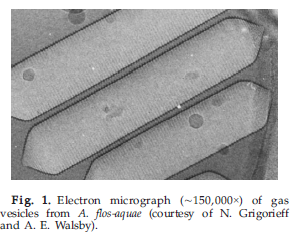Team:Groningen/Project/Transport
From 2009.igem.org
[http://2009.igem.org/Team:Groningen http://2009.igem.org/wiki/images/f/f1/Igemhomelogo.png]
|
|
| ||||||||||||||||||||||||||||||||||||||||||||||||||||||||||||||||||||||||||||||||||||||||||||||||||||||||||||||||||||||||||||||||||||||||||||||||||||||||||||||||||||||||||||||||||||||||||||||||||||||||||||||||||||||||||||||||||||||||||||||||||||||||||||||||||||||||||||||||||||||||||||||||||||||||||||||||||||||||||||||||||||||||||||||||||||||||||||||||||||||||||||||||||||||||||||||||||||||||||||
|---|---|---|---|---|---|---|---|---|---|---|---|---|---|---|---|---|---|---|---|---|---|---|---|---|---|---|---|---|---|---|---|---|---|---|---|---|---|---|---|---|---|---|---|---|---|---|---|---|---|---|---|---|---|---|---|---|---|---|---|---|---|---|---|---|---|---|---|---|---|---|---|---|---|---|---|---|---|---|---|---|---|---|---|---|---|---|---|---|---|---|---|---|---|---|---|---|---|---|---|---|---|---|---|---|---|---|---|---|---|---|---|---|---|---|---|---|---|---|---|---|---|---|---|---|---|---|---|---|---|---|---|---|---|---|---|---|---|---|---|---|---|---|---|---|---|---|---|---|---|---|---|---|---|---|---|---|---|---|---|---|---|---|---|---|---|---|---|---|---|---|---|---|---|---|---|---|---|---|---|---|---|---|---|---|---|---|---|---|---|---|---|---|---|---|---|---|---|---|---|---|---|---|---|---|---|---|---|---|---|---|---|---|---|---|---|---|---|---|---|---|---|---|---|---|---|---|---|---|---|---|---|---|---|---|---|---|---|---|---|---|---|---|---|---|---|---|---|---|---|---|---|---|---|---|---|---|---|---|---|---|---|---|---|---|---|---|---|---|---|---|---|---|---|---|---|---|---|---|---|---|---|---|---|---|---|---|---|---|---|---|---|---|---|---|---|---|---|---|---|---|---|---|---|---|---|---|---|---|---|---|---|---|---|---|---|---|---|---|---|---|---|---|---|---|---|---|---|---|---|---|---|---|---|---|---|---|---|---|---|---|---|---|---|---|---|---|---|---|---|---|---|---|---|---|---|---|---|---|---|---|---|---|---|---|---|---|---|---|---|---|---|---|---|---|---|---|---|---|---|---|---|---|---|---|---|---|---|---|---|---|---|---|---|---|---|---|---|---|
Introduction
About 150 species of prokaryotes (well studied examples are cyanobacteria and halophilic archaea) in aquatic habitats have been shown to contain gas vesicles. These gas vesicles provide cells with bouyancy, there function is either to positioning the bacterium (in water) in order to get the right amount of oxygen or the right amount of light. Gas vesicles are made exclusively of proteins and contain gas. When gas vesicles are present in a cell, the overall density of that cell is lowered and the cell becomes bouyant.
We want to utilize this bouyancy for an application like for example separation of specific molecules or specific cells.
Gas vesicles are hollow proteinous organelles made of gvpA and gvpC (in cyanobacteria) and are permeable to gases and fills by diffusion. It is impermeable to water because of its hydrophobic inside. GvpA is a small 70AA long protein which forms a linear crystalline array of ribs to form the cylindrical shell and conical ends. GvpC is usually on the outside of the gas vesicle to make it stronger and stabilizes the structure (see Figure 1).
In B. megaterium a gas vesicle gene-cluster was found, which contained 14 gvp genes (gas vescicle polycitonic genes) which were functionally expressed in E. coli by Ning Li and Maura Cannon (Li and Cannon, 1995). The best bouyant fenotype was found when gvpA, gvpP, gvpQ and ORF-1 were excluded (see figure 2). It was suggested that gvpB on the gvp-cluster of B. megaterium is an homolog of gvpA.

- Figure 2: gvp cluster B. megaterium. Taken from Li and Cannon, 1995
HmtA
Missing information
Literature
Lewinson O., Lee A.T., Rees D.C. 2009. A P-type ATPase importer that discriminates between essential and toxic transition metals. PNAS. vol. 106, no. 12, p. 4677-4682.
Mer operon
Missing information
Literature
Lewinson O., Lee A.T., Rees D.C. 2009. A P-type ATPase importer that discriminates between essential and toxic transition metals. PNAS. vol. 106, no. 12, p. 4677-4682.
 "
"
